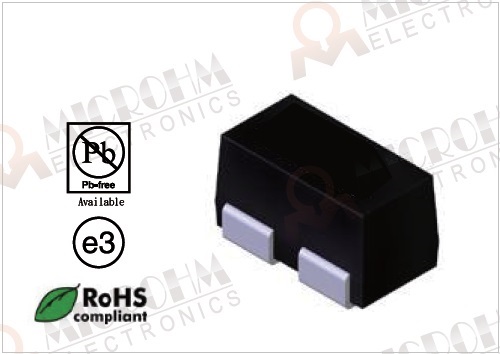Position:Home » Technical Articles
Power Surge for Resistors in Motor Control Applications
Writer:Microhm Page View:Date:2019-11-25
Thin film, thick film, wirewound and solidcomposition resistors offer different thermal dissipation and surge-withstand characteristics, which impact their abilities to handle overcurrent and overvoltage conditions. Microhm Electronics resistors, such as NSS series and KSW series, has superior surge handling capacity.
Motor controllers used to power, stop and control the speed of a variety of motors must deal with a wide variety of surges due to switching events. When a motor starts, the current draw during the speed ramp-up is excessive, and during this relatively short period of time, the energy surge can cause failure in resistors or other circuit components. If capacitors are used to store energy for motor starting, the current-limiting resistors see excessive loads during the charge/discharge cycles.

Power surge is a common cause of failure in resistors in motor control circuits. Many designers underestimate the potential for damage to resistors and other components resulting from the effects of power surge. Additionally, many engineers will design their circuits for steady-state conditions without realizing that their “worst case” may indeed be power surge instead.
The first step in making sure power surges do not cause resistor failure is to distinguish a surge condition from short-time overload. Short-time overload occurs when an overpower event has a duration of 0.5 seconds or more. This causes the resistive component to heat up, but it also gives the substrate to which the component is mounted time to dissipate the heat generated by the increased current.

In contrast, “surge” occurs over such a short period of time (less than 0.5 s) that the substrate has no chance to help dissipate the heat and it must be completely absorbed by the resistive element. Common causes of surge are capacitor charge/discharge (less than 1 ms) and motor startup (typically less than 0.5 s).
Motor controllers used to power, stop and control the speed of a variety of motors must deal with a wide variety of surges due to switching events. When a motor starts, the current draw during the speed ramp-up is excessive, and during this relatively short period of time, the energy surge can cause failure in resistors or other circuit components. If capacitors are used to store energy for motor starting, the current-limiting resistors see excessive loads during the charge/discharge cycles.

Power surge is a common cause of failure in resistors in motor control circuits. Many designers underestimate the potential for damage to resistors and other components resulting from the effects of power surge. Additionally, many engineers will design their circuits for steady-state conditions without realizing that their “worst case” may indeed be power surge instead.
The first step in making sure power surges do not cause resistor failure is to distinguish a surge condition from short-time overload. Short-time overload occurs when an overpower event has a duration of 0.5 seconds or more. This causes the resistive component to heat up, but it also gives the substrate to which the component is mounted time to dissipate the heat generated by the increased current.

In contrast, “surge” occurs over such a short period of time (less than 0.5 s) that the substrate has no chance to help dissipate the heat and it must be completely absorbed by the resistive element. Common causes of surge are capacitor charge/discharge (less than 1 ms) and motor startup (typically less than 0.5 s).
Keywords:
Latest News
- Resistor's role in measuring and correcting LED,,,
- Single through-hole resistors' characteristics ,,,
- Why shunt resistors for current sense applicati,,,
- Metal-film resistors with small size, high resi,,,
- 36W High-Current Shunt Resistors MMS8420,,,
- 1W Surface Mount Resistor MPR1206,,,
- An Overview of Microhm Electronics' Resistor Pr,,,
- More anti-sulfur resistors used in harsh envir,,,
- Resistance changes with temperature,,,
- 140W TO247 High Power Heatsinkable Resistor,,,
- MMS5930 is ideal for current sensing in industr,,,
- Shunt resistors selection for engineers' design,,,
- Considerations for choosing precision resistors,,,
- Ceramic Encased Cement Resistors NWH Series for,,,
- Resistors for Passive Balancing in Battery-Pow,,,
Hot Articles
- Microhm will take part in 10th Automotive World,,,
- Thanks for Visiting Microhm's Booth E5-5706 in ,,,
- Resistors in Short Supply: Blame Cars,,,
- New lunch: High Power Precision Shunt Resistor,,,,
- How to Test a Resistor,,,
- Innovative Technology, Future Electric: Electri,,,
- What is Precision Resistors?,,,
- SMD Resistors Sizes and Packages,,,
- The Construction and Features of Metal Film Res,,,
- What is a TO-220 Resisor?,,,
- Hot Selling Products: Precision Shunt Resistors,,,
- How to Calculate the Equivalent Resistance Valu,,,
- What is a Fixed Resistor?,,,
- Resistors in LED Circuits,,,
- Resistors Types and Materials Overview,,,
Resistance applications
- Precision Resistors' Construction and TCR,,,
- Urbanization Development Bringing the Transform,,,
- Shunt Resistor MMS8420 for High Current Stable ,,,
- The Main Application for High Precision and Low,,,
- Miniature future for passive electronic compone,,,
- BMS for New Energy Vehicle,,,
- Surface Mount Resistor's Size and Package ,,,
- Why Zero-Ohm Resistors?,,,
- Difference Between High Precision Resistors and,,,
- The Measurement Accuracy of Automotive Shunt is,,,
- The Four Important Functions of Alloy Resistors,,,
- Select the Right Resistor for Harmonic Filterin,,,
- Industrial Roberts Applied to Solar Photovoltai,,,
- Heater Blower Motor Resistor in Air Conditioner,,,
- Carbon Film Resistors' Features and Application,,,
